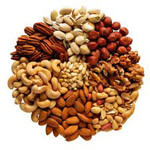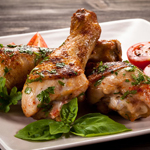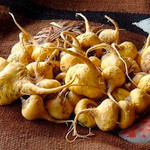 Vitamin E is a natural antioxidant that fights the damaging effects of free radicals, thereby repairing, nourishing, and rejuvenating our hair, nails, and skin. Unlike many other vitamins, vitamin E is not fat soluble, meaning that we need a constant supply of it from external sources because our bodies cannot store it themselves.
Vitamin E is a natural antioxidant that fights the damaging effects of free radicals, thereby repairing, nourishing, and rejuvenating our hair, nails, and skin. Unlike many other vitamins, vitamin E is not fat soluble, meaning that we need a constant supply of it from external sources because our bodies cannot store it themselves.
According to research, the average adult of both sexes need approximately 22.4 international units (15 micrograms) of vitamin E per day. Undoubtedly the best way to achieve this recommended amount of vitamin E is to eat foods that contain high levels of it. Let’s take a look at the best of them now.
Foods High in Vitamin E
Sunflower seeds – One 100 gram serving of sunflower seeds provides us with more than double the amount of vitamin E that our bodies need daily. Moreover, 100 grams of sunflower seeds provides us with 540 calories, 20 grams of protein, and 8 grams of dietary fiber. Please note, however, that sunflower seeds have a rather high fat content: one 100 gram serving contains almost 12 grams of fat. One cup of sunflower seeds also provides us with 15 percent of our daily iron intake, and respectable amounts of essential minerals and nutrients like manganese, selenium, thiamin, and vitamin B6.
Chili powder – 100 grams of chili powder provide us with approximately 30 micrograms of vitamin E, or 200 percent of the daily recommended intake. Since most people only use a few pinches of chili powder at a time, they can get between 30 and 50 percent of their vitamin E intake just by adding more chili powder to the dishes that they prepare.
Almonds – 100 grams of almonds provide us with almost 100 percent of our recommended daily intake of vitamin E. Almonds are also incredibly nutritious foods; for example, one ounce of almonds yields about 160 calories, six grams of protein, and four grams of dietary fiber. Moreover, almonds have zero cholesterol and are also rich in manganese and magnesium, two minerals that help the bones and the nervous system.
Peanuts – 100 grams of peanuts provide us with approximately 30 percent of our RDI of vitamin E. Furthermore, one ounce of peanuts yields approximately 170 calories, seven grams of protein, and between two and three grams of dietary fiber. Peanuts are also high in manganese and niacin.
Spinach – 100 grams of spinach provide us with approximately 20 percent of our RDI of vitamin E. Other nutrients contained in spinach include iron, fiber, niacin, phosphorus, potassium, vitamin A, vitamin B6, vitamin C, zinc, and calcium. Spinach is also an incredibly low calorie food; one cup of spinach provides just seven calories.
Pine nuts – A great topping for salads, pine nuts is another good source of vitamin E. 100 grams of them provide us with approximately 50 percent of our RDI of vitamin E. One tablespoon of pine nuts also yields about 60 calories and 1.2 grams of protein. Pine nuts have no cholesterol and are very low in sodium as well, making them a very healthy snack or addition to main meals.
Other foods that are rich in vitamin E include taro root, green olives, avocados, apricots, and most dried herbs. Ideally, we should consume all the foods mentioned above on a rotational basis to get the most out of the various nutrient mixes that they provide.






